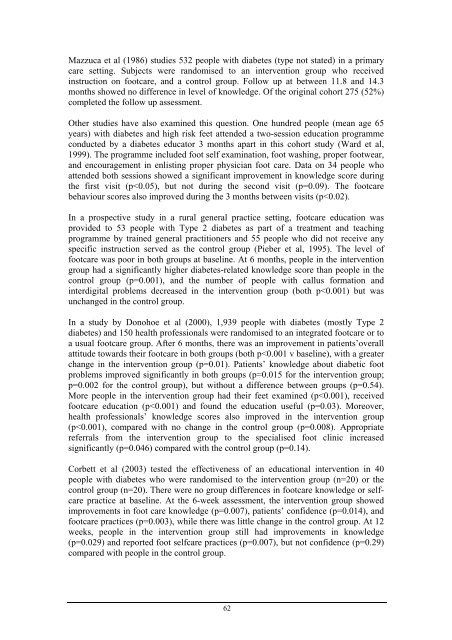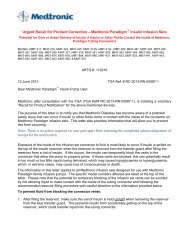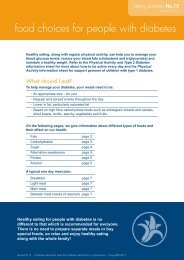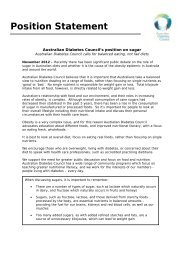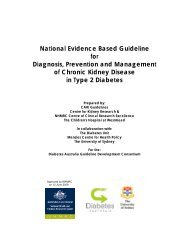Part 6: Detection and Prevention of Foot Problems in Type 2 Diabetes
Part 6: Detection and Prevention of Foot Problems in Type 2 Diabetes
Part 6: Detection and Prevention of Foot Problems in Type 2 Diabetes
You also want an ePaper? Increase the reach of your titles
YUMPU automatically turns print PDFs into web optimized ePapers that Google loves.
Mazzuca et al (1986) studies 532 people with diabetes (type not stated) <strong>in</strong> a primarycare sett<strong>in</strong>g. Subjects were r<strong>and</strong>omised to an <strong>in</strong>tervention group who received<strong>in</strong>struction on footcare, <strong>and</strong> a control group. Follow up at between 11.8 <strong>and</strong> 14.3months showed no difference <strong>in</strong> level <strong>of</strong> knowledge. Of the orig<strong>in</strong>al cohort 275 (52%)completed the follow up assessment.Other studies have also exam<strong>in</strong>ed this question. One hundred people (mean age 65years) with diabetes <strong>and</strong> high risk feet attended a two-session education programmeconducted by a diabetes educator 3 months apart <strong>in</strong> this cohort study (Ward et al,1999). The programme <strong>in</strong>cluded foot self exam<strong>in</strong>ation, foot wash<strong>in</strong>g, proper footwear,<strong>and</strong> encouragement <strong>in</strong> enlist<strong>in</strong>g proper physician foot care. Data on 34 people whoattended both sessions showed a significant improvement <strong>in</strong> knowledge score dur<strong>in</strong>gthe first visit (p


